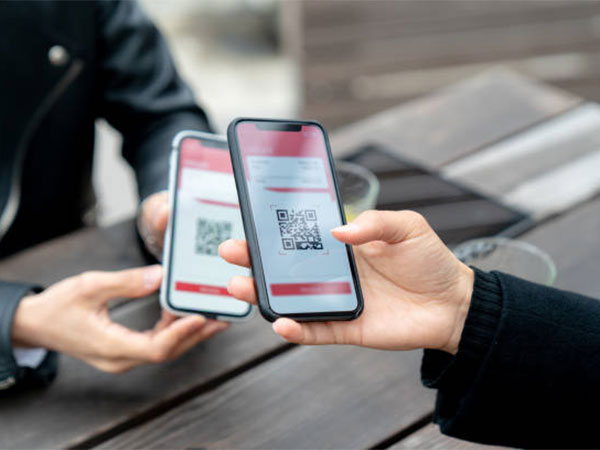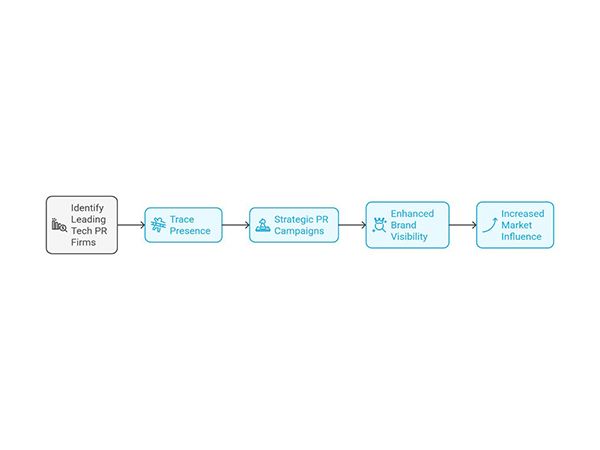The Impact of Mobile Payments on Acceptance Rates
Jun 28, 2024

VMPL
New Delhi [India], June 28:In today's fast-paced digital world, the way we handle money and transactions has transformed significantly. Among the most notable changes is the rise of mobile payments, which have revolutionized how consumers and businesses interact financially. Mobile payments offer convenience, speed, and security, significantly impacting payment acceptance rates. This article delves into the multifaceted influence of mobile payments on acceptance rates, exploring the benefits, challenges, and future implications for businesses and consumers alike.
Understanding Mobile Payments
Mobile payments refer to financial transactions made through mobile devices such as smartphones and tablets. These payments can be conducted via various methods, including mobile wallets (like Apple Pay, Google Wallet, and Samsung Pay), mobile banking apps, and direct carrier billing. The primary allure of mobile payments lies in their convenience; users can complete transactions anywhere, anytime, without needing physical cash or cards.
The rise of mobile payments is also fueled by the growth of contactless payment options, which have become increasingly popular, especially in the wake of the COVID-19 pandemic. Contactless payments allow users to simply tap their mobile devices or cards on a payment terminal, minimizing physical contact and enhancing hygiene. This convenience and safety have further accelerated the adoption of mobile payments globally.
The Rise of Mobile Payments
The proliferation of smartphones and the growing penetration of Internet services have been instrumental in the rise of mobile payments. According to a report by Statista, the number of mobile payment users worldwide is expected to surpass 1.31 billion by 2023. This surge is driven by factors such as technological advancements, increasing consumer trust in mobile security, and the desire for quicker, more efficient transaction methods.
Technological Advancements
Technological advancements have played a crucial role in the adoption of mobile payments. The development of high-speed mobile internet, coupled with the increasing affordability of smartphones, has made it easier for consumers to access mobile payment services. Innovations such as Near Field Communication (NFC) technology enable contactless payments, allowing users to make transactions simply by tapping their phones on a payment terminal. This convenience has made mobile payments an attractive option for consumers and businesses alike.
Increasing Consumer Trust
Consumer trust is a critical factor in the adoption of any new technology, and mobile payments are no exception. Over the years, mobile payment providers have invested heavily in security measures to protect users' sensitive information. Encryption, tokenization, and two-factor authentication are some of the security features that have been implemented to safeguard mobile transactions.
Desire for Efficiency
In today's fast-paced world, efficiency is paramount. Consumers are increasingly seeking quick and hassle-free ways to conduct transactions, and mobile payments perfectly cater to this need. Unlike traditional payment methods, mobile payments eliminate the need to carry cash or physical cards. Transactions can be completed in seconds with just a few taps on a smartphone, making the payment process incredibly efficient.
Expanding Global Reach
Mobile payments are not limited to developed markets; they are also gaining traction in emerging economies. In regions with limited access to traditional banking services, mobile payments offer a viable alternative for financial inclusion. For instance, in countries across Africa and Asia, mobile payment platforms such as M-Pesa and Alipay have revolutionized the way people conduct transactions, providing access to financial services for millions of unbanked individuals.
The success of mobile payments in emerging markets can be attributed to several factors. Firstly, the widespread availability of mobile phones, even in remote areas, has enabled people to access mobile payment services. Secondly, mobile payments eliminate the need for physical banking infrastructure, making financial services more accessible and affordable. Lastly, partnerships between mobile payment providers and local businesses have created a robust ecosystem that supports the growth of mobile payments.
Impact on Payment Acceptance Rates
Payment acceptance rates refer to the percentage of transactions approved by the payment processor. High acceptance rates are crucial for businesses as they directly impact revenue, customer satisfaction, and operational efficiency. Mobile payments have a profound effect on these rates in several ways:
1. Increased Convenience and Speed
Mobile payments streamline the transaction process, making it quicker and more convenient for consumers. This ease of use leads to higher customer satisfaction and encourages frequent usage, resulting in increased acceptance rates. Unlike traditional payment methods, mobile payments can be completed with just a few taps on a smartphone, reducing the likelihood of transaction abandonment.
The speed of mobile payments is particularly beneficial in high-volume environments such as retail stores and quick-service restaurants, where efficiency is paramount. By reducing the time customers spend at the checkout, businesses can serve more customers and increase their overall sales volume. This efficiency translates into higher acceptance rates as more transactions are successfully processed.
2. Enhanced Security
Security concerns have always been a significant barrier to higher acceptance rates. Mobile payments by Paysecure address this issue with advanced security features such as tokenization, encryption, and biometric authentication (fingerprint or facial recognition). These measures protect sensitive information and reduce the risk of fraud, leading to higher approval rates from payment processors.
Tokenization, for instance, replaces sensitive payment information with a unique identifier or token, which cannot be used outside the specific transaction context. This process minimizes the risk of data breaches and fraud, making mobile payments more secure than traditional card transactions. The added layer of biometric authentication further enhances security by ensuring that only the authorized user can complete the transaction.
3. Broader Acceptance of Payment Methods
Mobile payments integrate multiple payment methods, including credit/debit cards, bank transfers, and digital wallets, into a single platform. This flexibility allows businesses to accept a wider range of payment options, catering to diverse customer preferences and increasing the likelihood of transaction approvals.
The integration of various payment methods also simplifies the payment process for consumers, who can choose their preferred method without needing to carry multiple cards or cash. This convenience encourages more frequent use of mobile payments, contributing to higher acceptance rates. Additionally, businesses that offer multiple payment options can attract a broader customer base, further enhancing their acceptance rates.
4. Improved Fraud Detection
Modern mobile payment systems leverage artificial intelligence and machine learning to detect and prevent fraudulent activities. These technologies analyze transaction patterns in real-time, flagging suspicious activities and reducing false declines. As a result, businesses experience higher acceptance rates and lower fraud-related losses.
AI-driven fraud detection systems continuously learn and adapt to new fraud patterns, improving their accuracy and effectiveness over time. This adaptability ensures that businesses can stay ahead of evolving fraud tactics, maintaining high acceptance rates and protecting their revenue. Moreover, the reduction in false declines enhances customer satisfaction, as legitimate transactions are less likely to be incorrectly rejected.
5. Increased Customer Trust
The integration of secure mobile payment solutions fosters greater consumer trust. When customers feel confident that their transactions are safe, they are more likely to use mobile payments frequently. This trust translates into higher acceptance rates as businesses can process more transactions without fear of fraud or chargebacks.
Building customer trust is essential for long-term business success. By demonstrating a commitment to security and customer satisfaction, businesses can cultivate loyal customers who are more likely to return and make repeat purchases. The enhanced trust in mobile payment systems also encourages word-of-mouth recommendations, attracting new customers and further boosting acceptance rates.
Challenges and Considerations
While mobile payments significantly enhance acceptance rates, businesses must navigate several challenges to fully capitalize on their benefits.
1. Technological Barriers
The implementation of mobile payment systems requires robust technological infrastructure. Small businesses, in particular, may struggle with the initial investment and ongoing maintenance costs. Ensuring compatibility with various mobile platforms and keeping up with technological advancements can be daunting.
To address these challenges, businesses can explore partnerships with technology providers that offer affordable and scalable mobile payment solutions. Additionally, leveraging cloud-based payment platforms can reduce the burden of maintaining on-premise infrastructure, making it easier for small businesses to adopt mobile payments.
2. Regulatory Compliance
Mobile payments are subject to stringent regulations to protect consumer data and prevent fraud. Businesses must comply with laws such as the Payment Card Industry Data Security Standard (PCI DSS) and the General Data Protection Regulation (GDPR). Navigating these regulations can be complex and requires dedicated resources.
Non-compliance with regulatory requirements can result in severe penalties and reputational damage. Therefore, businesses must invest in robust compliance programs and stay informed about evolving regulations. Working with legal and compliance experts can help businesses navigate the regulatory landscape and ensure adherence to all necessary standards.
3. Consumer Education
Despite the growing popularity of mobile payments, some consumers remain hesitant to adopt new technologies due to a lack of understanding or mistrust. Businesses must invest in educating their customers about the benefits and security features of mobile payments to encourage widespread adoption.
Consumer education initiatives can include in-store demonstrations, informative marketing campaigns, and user-friendly guides on how to use mobile payment systems. By addressing common concerns and providing clear, concise information, businesses can build confidence in mobile payments and drive higher acceptance rates.
4. Market Fragmentation
The mobile payment landscape is highly fragmented, with numerous platforms and providers. This diversity can confuse consumers and create challenges for businesses trying to offer seamless payment experiences. Standardizing payment methods and ensuring interoperability between different systems are crucial for maximizing acceptance rates.
Collaboration among industry stakeholders, including payment processors, technology providers, and regulatory bodies, is essential to address market fragmentation. Developing common standards and protocols can enhance interoperability and simplify the payment process for both businesses and consumers.
Future Implications
The impact of mobile payments on acceptance rates is expected to grow as technology evolves and consumer behavior continues to shift towards digital solutions. Several trends and developments will shape the future of mobile payments and their influence on acceptance rates:
1. 5G Technology
The rollout of 5G networks will enhance mobile payment experiences by providing faster, more reliable connections. This improvement will further streamline transactions, reduce latency, and support the development of innovative payment solutions, ultimately boosting acceptance rates.
5G technology will also enable new use cases for mobile payments, such as real-time financial services, enhanced augmented reality shopping experiences, and seamless cross-border transactions. These advancements will create additional opportunities for businesses to engage with customers and drive higher acceptance rates.
2. Integration with Emerging Technologies
The integration of mobile payments with emerging technologies such as the Internet of Things (IoT), blockchain, and augmented reality (AR) will create new opportunities for businesses to engage with customers and facilitate seamless transactions. These advancements will contribute to higher acceptance rates by offering more personalized and secure payment experiences.
For example, IoT-enabled devices can facilitate automatic payments for various services, such as smart refrigerators reordering groceries or connected cars paying for tolls and parking. Blockchain technology can enhance the security and transparency of mobile payments, further boosting consumer trust and acceptance rates.
3. Expansion of Mobile Payment Ecosystems
As mobile payment ecosystems expand, more businesses and consumers will adopt these technologies. The growth of mobile payment platforms, partnerships between financial institutions and technology providers, and the development of new use cases will drive higher acceptance rates.
Collaborative efforts among industry players can create more comprehensive and user-friendly mobile payment solutions, encouraging widespread adoption. Additionally, the expansion of mobile payment ecosystems into emerging markets will provide new opportunities for businesses to reach previously underserved populations.
4. Global Adoption
Mobile payments are gaining traction worldwide, with significant growth in emerging markets. The increasing adoption of mobile payments in regions with limited access to traditional banking services will contribute to higher global acceptance rates. Businesses that cater to international markets will benefit from the broader acceptance of mobile payments.
Emerging markets present unique opportunities for mobile payments, as many consumers in these regions rely on mobile devices for financial services due to the lack of traditional banking infrastructure. By offering mobile payment solutions tailored to the needs of these markets, businesses can drive higher acceptance rates and tap into new revenue streams.
Conclusion
The impact of mobile payments on acceptance rates is profound and multifaceted. By offering convenience, security, and flexibility, mobile payments enhance the transaction experience for both businesses and consumers. As technology continues to evolve and adoption rates increase, the influence of mobile payments on acceptance rates will become even more significant. Businesses that embrace mobile payment solutions and address the associated challenges will be well-positioned to thrive in the digital economy, enjoying higher acceptance rates and greater customer satisfaction.
(ADVERTORIAL DISCLAIMER: The above press release has been provided by VMPL. ANI will not be responsible in any way for the content of the same)









